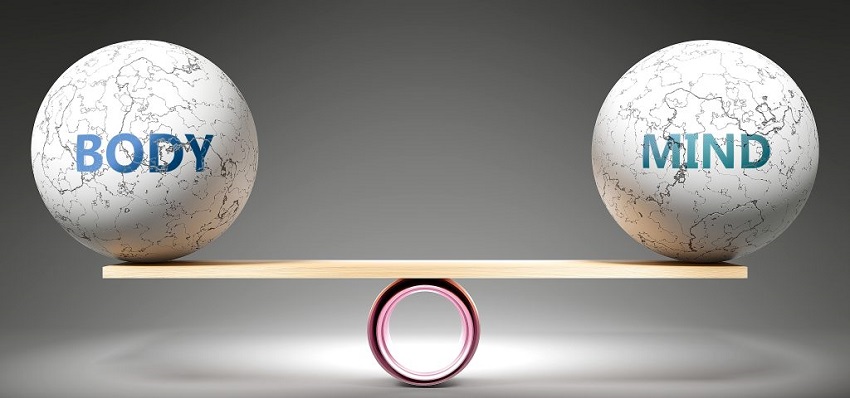
Massage therapy is a popular practice that has been used for centuries to promote relaxation, relieve muscle tension, and improve overall well-being. It involves the manipulation of soft tissues in the body to enhance physical and mental health. While there are various techniques and approaches to massage, they all adhere to four fundamental principles that guide the practice. In this article, we will explore these principles and understand how they contribute to the effectiveness of massage therapy. This content is created by https://bizargirls.com/
Principle 1 – Relaxation and Stress Relief
Massage therapy is primarily known for its ability to induce relaxation and relieve stress. In today’s fast-paced world, many people experience high levels of stress, which can have a detrimental impact on their health. Massage provides a sanctuary for individuals to unwind, release tension, and find solace from the demands of daily life. One of the most popular types of massages is Swedish massage, which involves long, flowing strokes that promote relaxation and improve circulation. Through the gentle kneading, stroking, and manipulation of the body’s soft tissues, massage therapists help promote relaxation, reduce anxiety, and alleviate the physical symptoms associated with stress.
Principle 2 – Improved Circulation and Blood Flow
One of the key benefits of massage is its ability to enhance circulation and blood flow throughout the body. By applying pressure to the muscles and tissues, massage stimulates the blood vessels, allowing for improved oxygen and nutrient delivery to the cells. This increased circulation helps remove metabolic waste products, reduce inflammation, and promote healing. Whether it’s a gentle Swedish massage or a more vigorous deep tissue massage, the manipulation of the body’s tissues improves vascular function, contributing to overall health and vitality.
Principle 3 – Pain Relief and Muscle Relaxation
Massage therapy is highly effective in relieving pain and promoting muscle relaxation. Whether it’s chronic pain, sports-related injuries, or general muscle tension, massage can provide much-needed relief. Through various techniques such as kneading, stretching, and applying pressure to specific points, massage therapists can target problem areas and alleviate pain. Additionally, massage helps relax tight muscles, improve flexibility, and restore range of motion. It stimulates the release of endorphins, the body’s natural painkillers, further enhancing the pain-relieving effects of massage.
Principle 4 – Increased Body Awareness and Mind-Body Connection
Massage therapy not only focuses on the physical aspects of the body but also enhances body awareness and promotes a stronger mind-body connection. During a massage session, individuals are encouraged to tune in to their bodies, paying attention to sensations, tension, and areas of discomfort. This heightened awareness allows individuals to recognize and address imbalances or areas that require attention. Moreover, massage promotes a sense of mindfulness and relaxation, allowing individuals to connect with their bodies on a deeper level and foster a greater sense of well-being.
In conclusion, massage therapy encompasses four fundamental principles that make it a powerful tool for improving physical and mental health. By prioritizing relaxation and stress relief, enhancing circulation and blood flow, providing pain relief and muscle relaxation, and promoting body awareness and the mind-body connection, massage therapists create a holistic healing experience for their clients. Whether you’re seeking relief from muscle tension, looking to reduce stress, or simply want to enhance your overall well-being, incorporating regular massage sessions into your self-care routine can be incredibly beneficial.
FAQs
Q1: Is massage therapy suitable for everyone?
A1: Massage therapy is generally safe and suitable for most individuals. However, certain medical conditions or injuries may require modifications or the advice of a healthcare professional. It’s always best to consult with a licensed massage therapist or your healthcare provider before receiving a massage.
Q2: How often should I get a massage?
A2: The frequency of massage sessions depends on individual needs and goals. Some people benefit from weekly or bi-weekly sessions, while others may find monthly sessions sufficient. Discussing your specific concerns and desired outcomes with a qualified massage therapist can help determine an appropriate schedule for you.
Q3: Can massage therapy help with chronic pain conditions?
A3: Yes, massage therapy can be an effective complementary treatment for managing chronic pain conditions. By reducing muscle tension, improving circulation, and promoting relaxation, massage can help alleviate pain and improve overall quality of life. However, it’s important to consult with your healthcare provider for a comprehensive pain management plan.
Q4: Are there different types of massage techniques available?
A4: Yes, there are various massage techniques available, each with its own focus and benefits. Some popular techniques include Swedish massage, deep tissue massage, sports massage, and aromatherapy massage. Depending on your specific needs and preferences, a skilled massage therapist can recommend the most suitable technique for you.
Q5: How can I find a qualified massage therapist near me?
A5: To find a qualified and reputable massage therapist near you, you can start by asking for recommendations from friends, family, or healthcare professionals. Additionally, online directories and professional associations for massage therapists can provide valuable resources in your search for a skilled practitioner.
